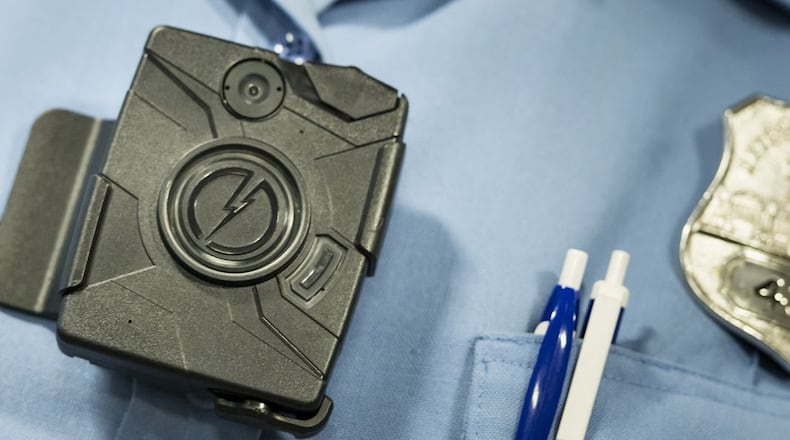Mayor Brent Centers said the city is seeking a state grant through the state Office of Criminal Justice for $222,000 to cover most of the costs of the project to outfit body cameras for its 19 patrol officers over five years. He said the ongoing yearly cost of the program would be about $55,000 a year.
Centers said the grant program is designed to help smaller law enforcement agencies obtain body cameras and covers the cost of the equipment, chargers, storage in the cloud, upgrades and maintenance. He expects the city to score high for the grant.
He said the Axon Body 3 camera has several features in which the body camera is activated when an officers draws his sidearm or Taser, and when the cruisers lights and sirens are turned on during a pursuit. It also allows a dispatcher see the GPS location and see where the officer is in real time, he said.
“I think it’s time (to obtain body cameras),” Centers said. “It’s safer for the officers and it’s safer for the residents. It’s a win-win for everyone.”
Councilman Michael Aldridge said the city should “get on board with this” adding that the body cameras will be part of the cost of doing business.
Franklin police chief Adam Colon said he used the body camera technology when he was with Riverside police, which was also one of the first police departments in Montgomery County to use them.
“They’re very helpful for transparency and for training on how we do business,” Colon said. “We can quickly see what happened and we can go back to review events so that we can improve and sustain ourselves.”
He said there will be a learning curve for officers at first. Colon said in his experience officers have been receptive to the technology.
He said the Axon system Franklin is considering will be able to redact private information automatically and the ability to blur faces. In addition, when a back-up officer arrives, their body cameras are automatically activated as well.
Officers will also be able to turn the body camera off when they are on break and other times permitted when the policy is developed, he said.
Advocates of the body camera technology say it helps law enforcement officers collect evidence, monitor deputy activity and resolve conflicts between police officials and the public. The body cameras have also helped to exonerate officers in some use of force incidents in the Dayton area recently.
Englewood was the first area department to use them, starting in 2014, and officers there are on their third generation of cameras.
Troopers from the Ohio State Highway Patrol currently do not wear body cameras, but that could be changing in the coming months.
Sgt. Jeff Staples of the Lebanon post said troopers currently have a microphone on their belts and cruiser cameras. However, he said the highway patrol is in the process of rolling out body cameras for troopers at posts in the Columbus and Wilmington districts. The Lebanon post is part of the Wilmington district.
Staples said the new Axon cameras will be linked to the cruiser’s camera system.
Other Warren County police agencies such as the Warren County Sheriff’s Office, Mason, Lebanon and Springboro do not utilize body cameras for their officers.
Warren County Sheriff Larry Sims said there were still a lot of unknowns such as the demand on resources and the amount of time needed for editing and redacting private information as well as storage of the body camera video.
“We’re watching and studying this and we’re trying to find out if there is a need for it,” he said.
Sims said all sheriff’s cruisers have enhanced audio and video systems that can be edited to redact private information.
About the Author

